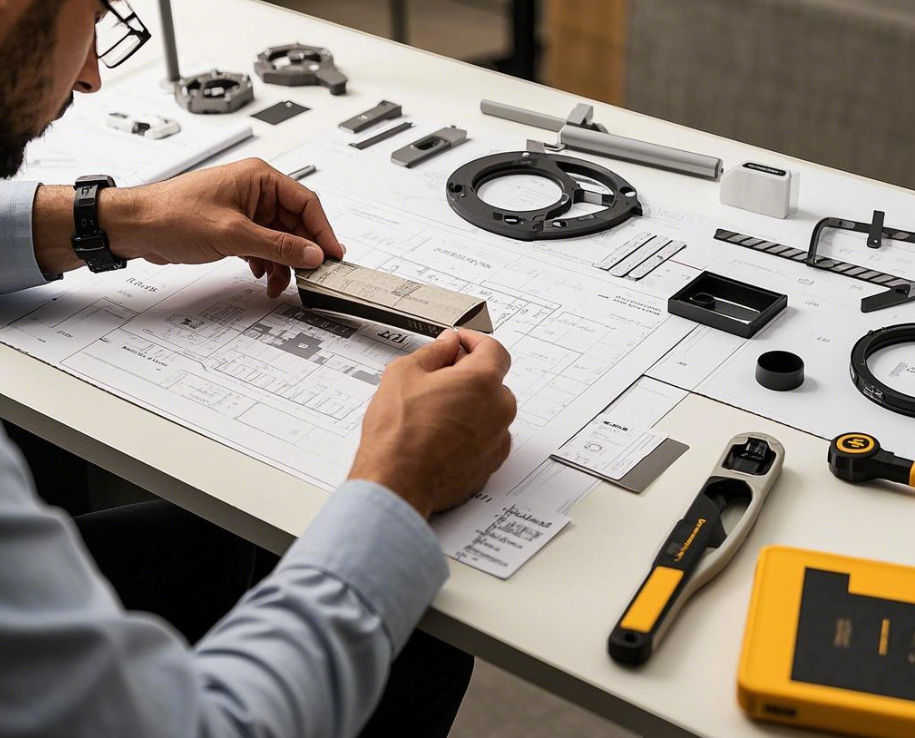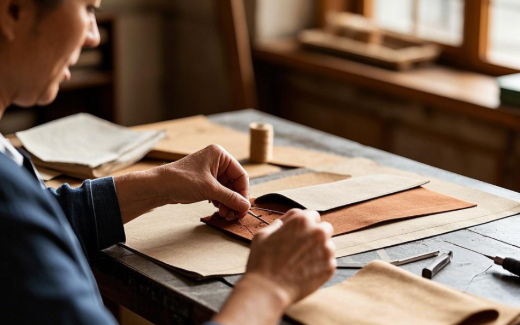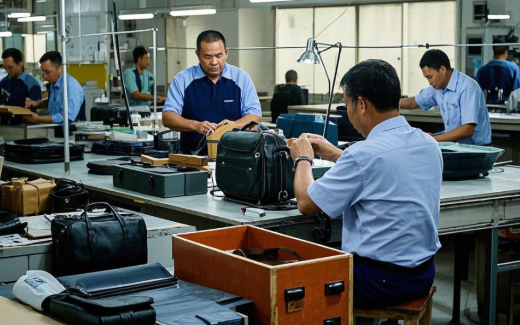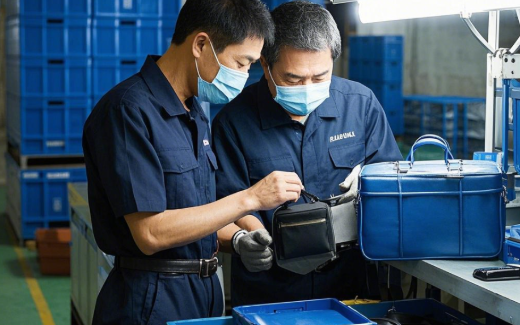
Lépések:
1. Az ügyfél kapcsolatba lép a bánkkal vagy a weboldal, telefon vagy e-mail útján.
2. A bérlői csapat megbeszélésre kerül az ügyfelekkel annak meghatározására, hogy mi a táskák célja (pl. üzleti, utazás, túrázás vagy napi használat). Ezenkívül megvitazzák a kapacitást, a tervezet stílusát, a színt és a speciális funkciókat, például a vízszigetelést, több zsebt, valamint a tartós anyagokat.
3. Ha szükséges, mintákat és referenciaanyagokat biztosítanak a vásárló számára, hogy jobban értsék a rendelkezésre álló anyagokat és tervezési lehetőségeket.

Lépések:
1. A tervező a vásárló specifikációinak megfelelően kidolgozza az elsődleges tervezeti javaslatot. Ez tartalmazza a táskaprofil, színskálá, anyagválasztás, méreteket és kiegészítő elemeket.
2. A vásárló átnézi a bemutatott tervet és visszajelzést ad rá.
3. A tervező a vásárló visszajelzésére módosítja a tervet. Ez az iteratív folyamat addig folytatódik, amíg a vásárló teljes kielégülést nem fejez ki.
4. A vásárló segítségére egy virtuális renderelést vagy 3D modellt készítenek a táskáról, hogy jobban képzelhessék el a végső terméket.
5. Amint a vásárló jóváhagyja a végső tervet, aláírja az egyéni rendelési szerződést és felteszi az előzetes fizetést.

Lépések:
1. A tervezi tervnek megfelelően mutasson egy sor anyagi választási lehetőséget, például nilón, drótkan, bőr, valamint rúdszorítók, csuklók és kötegek különböző típusait az ügyfél értékelésére és kiválasztására.
2. Az ügyfél választ aanyagok közül, és megjelenti, hogy szükséges-e bármilyen kiegészítő jellemző, például vízszorongató vagy antibaktériumos kezelés.
3. Az ügyfél végső megerősítést ad minden anyagra, biztosítva, hogy minden részlet rögzített.

Lépések:
1. A megerősített tervezet és anyagoknak megfelelően készítenek egy táskaproblémát mintát.
2. A mintát elküldik az ügyfélnek a vizsgálatra. Ők kiértékelhetik a megjelenést, méretét, funkcióit, anyagait és munkásművességét annak ellenőrzésére, hogy megfelel-e a várakozásoknak.
3. Az ügyfél eldönti, hogy a minta megfelel-e a szükségeinek, vagy visszajelzést ad a módosításokról.
4. Ha szükségesek a módosítások, a tervező hajlandó a szükséges változtatásokat, és újra elküldi a mintát jóváhagyáshoz.
5. Amint az ügyfél jóváhagyta a mintát, indítsa el a végső termelési rendelést.

Lépések:
1. Miután megerősítették a tervezetet és jóváhagyták a mintát, beállítják a termelési időtártervet.
2. A termelés folyamatában szigorú minőségbiztosítási intézkedések vannak kijelentve annak érdekében, hogy minden táskát a megfelelő normáknak megfelelően gyártanak.

Lépések:
1. Amint a termelés befejeződött, egy átfogó minőségvizsgálat zajlik le. Ez anyagok tartóságának, varrazás minőségének és zíperek és csuklók erősségének tesztelését tartalmazza.
2. Sikeres vizsgálat után a táskák elkészülnek csomagolásra. Egyedi csomagolási lehetőségeket, például ajándékkalocskákat vagy környezetbarát zsákokat a vevő preferenciái alapján kínálnak.
3. A vevő minden különleges csomagolási kérése megfelelően eleget tesz.

Lépések:
1. Amint a táskák átmentek a vizsgálaton és a végső ellenőrzéseken, elkezdődik a logisztikai előkészületek a szállításhoz.
2. A vásárló ellenőrzi a szállítási címet, kiválasztja a kurírt vagy a logisztikai szolgáltatót, és fizeti ki a maradék fizetést.
3. A szállítási módszer a vevő helyének megfelelően határozzák meg, hogy biztosítsanak gyors szállítást.
4. A nyomon követési adatokat megosztják, amelyek lehetővé teszik a vásárló számára a szállítási státusz valós idejű figyelését.

Lépések:
1. Amikor a vásárló már megkapta a táskát, bátorítjuk arra, hogy ossza meg velünk tapasztalatait telefonon vagy e-mailben keresztül.
2. Mindegyik minőségprobléma esetén, például anyag-hibák vagy munkavégzeti hibák esetén, a vevő elérheti az utánvizsgálati támogatási csapatot, hogy visszaváltásra, cserére vagy javításra vonatkozó lehetőségeket kérjen.
3. A vásárlói visszajelzések felhasználásával folyamatos fejlesztéseket vezetnek be a termékek és szolgáltatások javítása érdekében.